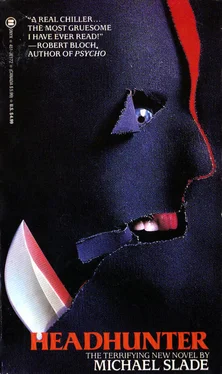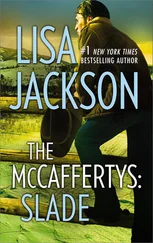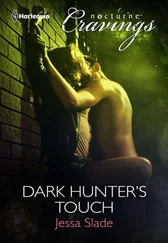Michael Slade - Headhunter
Здесь есть возможность читать онлайн «Michael Slade - Headhunter» весь текст электронной книги совершенно бесплатно (целиком полную версию без сокращений). В некоторых случаях можно слушать аудио, скачать через торрент в формате fb2 и присутствует краткое содержание. Жанр: Триллер, Ужасы и Мистика, на английском языке. Описание произведения, (предисловие) а так же отзывы посетителей доступны на портале библиотеки ЛибКат.
- Название:Headhunter
- Автор:
- Жанр:
- Год:неизвестен
- ISBN:нет данных
- Рейтинг книги:3 / 5. Голосов: 1
-
Избранное:Добавить в избранное
- Отзывы:
-
Ваша оценка:
- 60
- 1
- 2
- 3
- 4
- 5
Headhunter: краткое содержание, описание и аннотация
Предлагаем к чтению аннотацию, описание, краткое содержание или предисловие (зависит от того, что написал сам автор книги «Headhunter»). Если вы не нашли необходимую информацию о книге — напишите в комментариях, мы постараемся отыскать её.
The victims are everywhere — floating in the Fraser River, buried in a shallow grave, nailed to an Indian totem pole on the university campus. All are women. All are headless.
Then the photographs arrive. Carefully posed shots of the women's heads stuck on poles.
The Mounties of Special X are up against a unique brand of killer. A killer whose sexual psychosis stretches back through Ecuador's steaming jungle and a scream-filled New Orleans dungeon to a dead-of-winter manhunt in the Rocky Mountains a century ago.
Headhunter — читать онлайн бесплатно полную книгу (весь текст) целиком
Ниже представлен текст книги, разбитый по страницам. Система сохранения места последней прочитанной страницы, позволяет с удобством читать онлайн бесплатно книгу «Headhunter», без необходимости каждый раз заново искать на чём Вы остановились. Поставьте закладку, и сможете в любой момент перейти на страницу, на которой закончили чтение.
Интервал:
Закладка:
It was now just after 6:30 a.m. and a light rain overnight had washed the mist from the air and left the lights of the city sparkling like diamonds on black velvet.
As DeClercq walked toward the doorway at the front of the Headquarters building the air felt crisp and clean within his lungs and the freshness of the morning seemed to add a clearness to his sense of purpose. It had been a long time since he was last a cop. It feels good to be back, he thought.
The first day of his resurrection — October 29th, the morning of Chartrand's call — DeClercq had met Sergeant Jack MacDougall of North Vancouver Detachment and Corporal James Rodale of Richmond Detachment to form the second Headhunter Squad. Earlier that morning while the Sergeant was overseeing the investigation out at the totem poles in front of the Museum of Man, Rodale had done a computer projection of the manpower available to the Force. A printout on the background and service record of each member in "E" Division was ready by noon that day.
That same afternoon, DeClercq, MacDougall and Rodale had put together the Squad. Then the duty calls had gone out.
The second day of his comeback DeClercq had spent shut up in his new office working over the files. He had read, digested, culled, and reconstructed each report on each crime at least seven times. The room now showed his work.
The office was at the end of a corridor that met the top of the stairs. A spacious room, thirty feet square, with a bank of windows along one side that looked out at St. Vincent's Hospital across 33rd, it had once been an officer's billiard room and an adjunct to the mess. But whatever purpose it had once served, it had now been modified to DeClercq's specific instructions. For on the first day of his resurrection — while he had been putting together his squad — a team of workmen had stripped the place and then reconstructed the three windowiess walls with floor to ceiling corkboard. And it was the Headhunter's work that now adorned the corkboard walls.
For furniture the office contained three Victorian library tables arranged in a horseshoe surrounding a single chair. The chair — which had once been at the center of the commanding officer's quarters generations ago and only just discovered in the basement — was highbacked with a barley-sugar frame and the crest of the RCMP carved in wood to crown its user's head. The chair faced six seats in front of the desk.
It was now 6:46 a.m. on the third day of the return of Robert DeClercq — and it was time to take off his jacket and sit in the chair and analyze yesterday's work. It was time to ride out on the hunt for the ghoul who was standing in the graveyard.
DeClercq sat down and rolled up his sleeves.
At the center of the wall across from his chair a large map of the Lower Mainland of British Columbia was pinned to the corkboard.
Next to it was a section of wall visually depicting the North Vancouver murder. In the center the Superintendent had pinned the unidentified Polaroid photograph sent to Skip O'Rourke at the Vancouver Sun. The Polaroid had itself been photographed and blown up, but though this enlargement was also on the wall it was too grainy in texture to add very much. The photo was of a young woman's head — she was probably in her teens. Her eyes were rolled back into her skull with just the barest trace of pupil moon peeking out beneath the eyelids. Her hair was black and tangled and matted with blood, her mouth open slackly as if stopped in a scream. Shreds of skin at the base of her neck dripped gore and curled toward the pole like several thin snakes.
What struck DeClercq was the fact that except for the head and the top of the pole on which it had been stuck, the photograph revealed nothing. No ground. No backdrop. Just a white surface as though the snap had been shot facing a linen sheet set up to highlight the head and the pole. A specially constructed pose, was the thought that entered his mind.
To the right of the Polaroid of the victim's head, DeClercq had attached two helicopter shots of the area around the bone site. They both revealed the North Shore hillside from about two hundred feet. With a sharp eye it was possible to make out the tattered tent half hidden by the bushes.
To the left of the Polaroid photograph, beside the police blowup, DeClercq had yesterday tacked up four Ident. Section pictures taken on MacDougall's orders. Two of the photos were shots of the shallow creekbed grave. Though the bones could clearly be seen, the amount of dirt dug away from them by the two girls' father — plus the statements later taken from the three of them — indicated that before the disturbance the remains had been hidden from sight. The creekbed was clogged with autumn leaves and broken branches, several of which appeared to have been cut and placed over the grave. One of the other two Ident. shots was of the cut ends of several of these branches. On later examination, the police lab had found striation marks identical to those discovered by Dr. Singh on the neck bones of the river floater and of the skeleton in question. The fourth photograph was a blowup of the marks on the upper neck of the unidentified corpse where the head had been cut from the body.
Put together, DeClercq thought, these pictures raise a number of questions. They offer very few answers.
He removed a sheet of paper from the drawer of the library table that formed the bottom of the horseshoe and began to write:
1. Was the woman killed at the location of the tent? Or was she carried there after her death by the Headhunter? If the latter, then a strong person indeed! It's very rugged terrain.
2. If deposited there after death, was the corpse carried down from the road up above? Or up from a boat on the sea? Or along the shore? It was probably done at dusk or in the early morning — dark enough for cover, but light enough to see.
3. Was the body meant to be found? Cut branches indicate that it was purposely hidden. Was the stream running at the time that it was left? Was it buried mainly by the act of nature?
Looking over the questions, DeClercq's gut reaction was that the woman was killed at the tent site, that she was probably camping there, and that the killer had then cut off her head and buried the body and in a frenzy ripped the tent to pieces. His reasoning was that up in the North Shore mountains there are a thousand sites more deserted than this one where a body would never be found. Here the risk of being seen was just too great. But the corpse was left at this location — so that indicated that either the Headhunter had stumbled upon her in the wood, or they had met at some other location and returned to the murder scene. If the Headhunter was camping here, one of the people in the houses nearby might have seen him coming and going. And that could lead to a description. No, the chances were the victim was the one who pitched the tent. But even that was conjecture. It might have been there before.
What concerned him most and tugged at his mind was not, however, the answer to these questions. It was the question that arose from these questions in the light of subsequent facts. For if this corpse was meant to be hidden, why had the Headhunter changed his style?
Look at the case of Joanna Portman.
Tacked to the corkboard wall in the section for the North Vancouver crime there were many other sheets of paper: lab and autopsy reports, police memos, witness statements, interforce inquiries — but these added little to his knowledge. From the angle of the cuts on the branch ends (plus the blade shape left in the flesh of Grabowski and Portman) the lab had determined that the weapon was probably a large bowie knife. That was more an American instrument than one found in Canada. The autopsy report revealed that there were cuts on several of the rib bones indicating that the North Van corpse might also have suffered a slash through the breasts. The time of death was estimated at between three and five months ago, but probably closer to three, since the last days of August had been very hot and decomposition would have advanced rapidly. A soil search of the entire gravesite was negative; a diver search of the shore waters by the RCMP frogman team had turned up nothing; an infrared helicopter scan of the area recorded no temperature differences that might indicate other rotting human remains. A check of the Harbor Patrol had proved fruitless and not one of the neighbors living on top of the hill had noticed anything suspicious. In fact only one had known that the tent was there.
Читать дальшеИнтервал:
Закладка:
Похожие книги на «Headhunter»
Представляем Вашему вниманию похожие книги на «Headhunter» списком для выбора. Мы отобрали схожую по названию и смыслу литературу в надежде предоставить читателям больше вариантов отыскать новые, интересные, ещё непрочитанные произведения.
Обсуждение, отзывы о книге «Headhunter» и просто собственные мнения читателей. Оставьте ваши комментарии, напишите, что Вы думаете о произведении, его смысле или главных героях. Укажите что конкретно понравилось, а что нет, и почему Вы так считаете.










